There are hundreds of spells in Baldur’s Gate 3, and many classes in the game can get access to some form of magic. For some classes like the !Paladin and !Ranger, spells are a nice side boon, but for others (!Bard, !Cleric, !Druid, !Sorcerer, !Warlock and !Wizard) spells are one of the class’s primary class features. Not all spells are created equal, and the number of spells you can know and/or prepare are limited, depending on the class. For players new to 5th Edition Dungeons and Dragons or just unaware of how otherwise familiar spells are implemented in Baldur’s Gate 3, picking your starting spells and choosing which spells to prepare can be a daunting roadblock. To that end, we’ll try and share what we consider the best cantrips and spells to start with in Baldur’s Gate 3.
Best Cantrips in Baldur’s Gate 3¶
Cantrips are the lowest tier of magic in Baldur’s Gate 3, but as a trade off for their comparatively limited potency compared to spells that actually consume spell slots, cantrips can be cast at will by the caster an unlimited number of times per day. This functionally makes cantrips the workhorse spells for casters, especially early on, and offensive cantrips generally replace weapons. Why bother with a crossbow when you can toss a Fire Bolt? Below you’ll find listed our top cantrips, followed by some descriptions:
List of Best Cantrips¶
| Best Cantrips | Classes |
|---|---|
| Warlock | |
| Sorcerer, Wizard | |
| Cleric, Druid | |
| Bard, Cleric, Sorcerer, Wizard | |
| Bard, Sorcerer, Warlock, Wizard | |
| Sorcerer, Wizard | |
| Sorcerer, Wizard | |
| Bard |
Eldritch Blast is what every offensive cantrip should be - potent, simple, and useful for the entire game.
Eldritch Blast Cantrip¶
There are a few reasons the !Warlock is generally beloved - that bad-boy aura that comes from making deals with sexy supernatural beings for power and knowledge is just one of them. Another is undoubtedly Eldritch Blast. At first glance it’s a bog-standard Cantrip not all that different from Fire Bolt; it deals 1d10 damage, requires an Attack Roll and can be fired from a comfortable range. On the downside, it does set things alight nor does it hinder regeneration. It does, however, deal force damage, which isn’t resisted very often. It also sounds and looks like a nuclear laser (look it up) of pure badassery.
The real reasons Eldritch Blast is good are because of the Invocations the !Warlock gets - Agonizing Blast adds the !Warlock’s Charisma modifier to each Eldritch Blast’s damage, and Repelling Blast knocks enemies away 4.5 meters, potentially punting them off cliffs. With the ![]() Potent Robe this Charisma bonus is doubled, and since any good !Warlock will aspire to get 20 Charisma, that’s 1d10+10 damage. You get a second beam at Lv5 and a third at Lv11, for 2d10+20 and finally 3d10+30 damage. Each round. No spell slots used. For a single Action. Add
Potent Robe this Charisma bonus is doubled, and since any good !Warlock will aspire to get 20 Charisma, that’s 1d10+10 damage. You get a second beam at Lv5 and a third at Lv11, for 2d10+20 and finally 3d10+30 damage. Each round. No spell slots used. For a single Action. Add ![]() Hex on any enemy and you get an extra +1d6 damage to each of those dice rolls, for 3d10+46. Bonkers.
Hex on any enemy and you get an extra +1d6 damage to each of those dice rolls, for 3d10+46. Bonkers.
Fire Bolt may not be as flashy and potent as Eldritch Blast, but it’s a solid damage-dealer that also detonates explosives and sets grease, plants, and webs alight, giving it great environmental utility.
Fire Bolt Cantrip¶
Look, not all spells are complicated. It’s fire. ![]() Fire’s cool. And it burns stuff, like webs (including the Web spell), Grease, and it destroys stupid mushrooms and other plants. Not only does this clear hazards without expended resources, but it also deals extra damage to enemies caught on surfaces Fire Bolt ignites. Some enemies also have their regeneration halted by fire damage. On top of all those things it’s a solid 1d10 ranged damage and a fine way for casters to spend early turns. This damage increases to 2d10 at Lv5 and 3d10 at Lv11.
Fire’s cool. And it burns stuff, like webs (including the Web spell), Grease, and it destroys stupid mushrooms and other plants. Not only does this clear hazards without expended resources, but it also deals extra damage to enemies caught on surfaces Fire Bolt ignites. Some enemies also have their regeneration halted by fire damage. On top of all those things it’s a solid 1d10 ranged damage and a fine way for casters to spend early turns. This damage increases to 2d10 at Lv5 and 3d10 at Lv11.
Guidance is one of the best support spells in the game, functionally giving +1d4 to most skill checks, if you can bothered to apply it.
Guidance Cantrip¶
Perhaps the best utility Cantrip in the game (sorry Light), Guidance gives any target a +1d4 bonus to all Ability Checks made over the next ten turns. Shoving an enemy? Bonus. Stealth checks? Bonus. Spotting and disarming traps? Bonus, bonus. Picking locks? Bonus. Attempting to pass Deception, Intimidation or Persuasion attempts to convince that ogre not to add you to the menu? Bonus, bonus, mmm… bonus. If your !Cleric is nearby you don’t even have to micromanage it, you can just click the “Add Bonus” button and choose a character with Guidance to apply the buff just before you roll the dice. Bonus! Sure it’s random, and sure some checks do still have to be micromanaged, but having the option to apply, on average, a +2.5 bonus to pretty much every skill check you make? Absurdly good. Don’t leave home without it.
Light Cantrip¶
A simple utility spell, it does what it says on the tin - it creates light, illumination the surrounding area. Cast it on a character and they’ll become a beacon in the darkness, protecting everybody in the vicinity from the scourge of stubbed toes. There’s no Concentration, it lasts until a Long Rest, and the only real limitation is each caster can only have one Light spell in effect at a time. Being in dark areas can impose some nasty penalties on characters without ![]() Darkvision, all of which are painlessly negated by the humble Light spell.
Darkvision, all of which are painlessly negated by the humble Light spell.
Mage Hand is a fragile summon that allows the caster to manipulate options, scout, and engage in bonus Shove checks - all without consuming spell slots.
Mage Hand Cantrip¶
An odd spell, this conjures a spectral, floating hand that you can control for 10 turns. It has a paltry number of Hit Points and cannot directly attack,but it can interact with objects - open doors, move light objects, fit through small places. This allows it to serve as a scout or distraction, but better yet you can control it autonomously and if it reaches an enemy, it can use the ![]() Shove action against them, potentially knocking them off cliffs. It’s a good cantrip with a lot of utility, albeit somewhat situational - it would be an absolutely mandatory pick if it didn’t require a Short Rest after each use (unusual for a cantrip), but even with this handicap it’s pretty useful.
Shove action against them, potentially knocking them off cliffs. It’s a good cantrip with a lot of utility, albeit somewhat situational - it would be an absolutely mandatory pick if it didn’t require a Short Rest after each use (unusual for a cantrip), but even with this handicap it’s pretty useful.
Ray of Frost Cantrip¶
A niche spell, but one with mentioning when the niche is so potent. Ray of Frost on its own is a handy enough spell, dealing 1d8 damage and reducing an enemy’s movement speed by 3 meters. As with all Cantrips, this damage increases at Lv5 (2d8) and Lv11 (3d8). Where Ray of Frost really shines is with the Storm Sorcerer build, as cold and lightning damage are both doubled against wet enemies. Hit an area with a Create and Destroy Water spell (create, in this case) and follow up with Ray of Frost to double your damage output. Granted, you’ll want to switch to something with more bite as you level up, but it’s the obvious choice for that build to start with.
Shocking Grasp Cantrip¶
While its 1d8 damage isn’t fantastic and its melee range seems a downright impediment, Shocking Grasp has a lot going for it. First, you have Advantage on the Attack Roll if the enemy is wearing metal armor, and if you hit with Shocking Grasp the enemy doesn’t get their Reaction until the start of their next turn, which means no Attacks of Opportunity, allowing a beleaguered mage to use this spell to reprimand a foe who doesn’t respect their personal space while also facilitating their safe egress. Finally, since this spell deals lightning game, it’ll deal double damage against wet enemies, syngerizing well with spells like ![]() Create or Destroy Water, provided you don’t end up on the wet ground you create, that is.
Create or Destroy Water, provided you don’t end up on the wet ground you create, that is.
Vicious Mockery Cantrip¶
Eldritch Blast is exclusive to the !Warlock, and Vicious Mockery is the province of the !Bard. While it doesn’t dish out much damage - a mere 1d4 for a full Action - it gives enemies Disadvantage on its next Attack Roll, which can really help your allies stay healthy. This is probably the best thing early-game !Bards can cast on their turn, assuming matters aren’t pressing enough to expend resources. Its damage increases to 2d4 at Lv5 and 3d4 at Lv11, but you may have grown out of it by then.
Best 1st-Level Spells in Baldur’s Gate 3¶
1st-Level Spells are a tier higher than Cantrips, generally having more pronounced effects, albeit with one significant downside. 1st-Level spells, and all spells hereafter, consume spell slots when used, and once your spell slots are expended you’ll need to perform a Long Rest to recover them (unless you’re a !Warlock, then a Short Rest will suffice). As you level up you’ll gain more spell slots, but you’ll initially need to consider the cost-benefit analysis of using spells, weighing it against the cost of consuming Camping Supplies… unless you go crazy stealing from merchants, in which case, go nuts! Below you’ll find a list of what we consider to be the best 1st-Level spells for starting characters:
List of Best 1st-Level Spells¶
| Best 1st-level Spells | Classes |
|---|---|
| Warlock | |
| Bard, Cleric | |
| Cleric, Paladin | |
| Cleric, Druid | |
| Bard | |
| Bard, Sorcerer, Wizard | |
| Ranger, Warlock (Pact of the Chain), Wizard | |
| Cleric (Nature), Druid, Ranger, Sorcerer, Wizard | |
| Bard, Cleric, Druid | |
| Warlock/Ranger | |
| Sorcerer, Wizard | |
| Bard, Cleric (Nature), Druid, Ranger | |
| Bard, Warlock (The Great Old One), Wizard | |
| Bard, Cleric (Nature), Druid, Sorcerer, Wizard |
Armor of Agathys¶
An odd armor spell in that it does absolutely nothing for the caster’s Armor Class. Instead it gives the caster Temporary Hit Points and causes enemies striking them to take cold damage (these variables increase the higher the level of the !Warlock’s spell slots). The idea is simple enough - your fragile !Warlock gets some disposable buffer Hit Points and deals some damage for braving melee combat. Not terrible, but it’s not great on its own. If you pick The Fiend as your subclass you’ll get bonus Temporary Hit Points and if you pick Pact of the Blade at Lv3 you’ll actually have offensive incentive to enter combat. Keep killing to ensure you have enough Temporary Hit Points to pad your normal Hit Points and you’ll deal damage every time an enemy attacks you. To sweeten the deal even more, this spell doesn’t require Concentration and lasts until a Long Rest. It’s a low-maintenance spell that will help keep the melee !Warlock alive and punish enemies who attack them.
Bane¶
You choose three enemies and they all suffer a -1d4 penalty to Attack Rolls and Saving Throws. These are potentially large debuffs, and if you’re fighting a handful of dangerous bruisers, this spell could well be worth the Concentration it consumes. Your enemies get a Charisma Save to resist its effects.
Bless gives three targets a +1d4 bonus to Attack Rolls and Saving Throws, making a great all-rounder buff.
Bless¶
The buff counterpart to Bane, Bless gives three allies a +1d4 bonus to Attack Rolls and Saving Throws. You might not find three hulks to cast Bane on, but you can control your party to ensure there are three characters worth buffing with Bless, and it’s often worth using up Concentration to keep this effect up. Also, unlike jerk enemies, your allies don’t get a save against this effect, making it generally superior. That’s not to say one caster can’t Bless while another uses Bane, however
Create or Destroy Water¶
Highly build dependant, but if you’re keen on the Storm Sorcerer, this is an essential pick. Specifically you want the “create” variant, as this will inflict the “wet” status on characters within the area of effect and create a large pool of water on the ground. Wet enemies take double damage from lightning and when lightning effects strike the ground will become electrified, dealing additional damage. A !Cleric/!Sorcerer who can quickcast Create Water, then follow up with ![]() Chromatic Orb or
Chromatic Orb or ![]() Witch Bolt spells will just be shoveling out damage.
Witch Bolt spells will just be shoveling out damage.
Dissonant Whispers¶
It’s odd that a list like this would have two spells where one significantly outshines the other, but in the case of Dissonant Whispers, it’s just a better cast than Tasha’s Hideous Laughter in most circumstances. Sadly, only !Bards gain access to Dissonant Whispers, so everybody else just has to make do until they get Hold Person. Dissonant Whispers deals 3d6 psychic damage to an enemy within 18 meters, and if they fail a Wisdom Save they become Frightened, becoming easier to hit an incapable of movement. On a melee combatant, this knocks them out of the fight for a bit, and it allows your other characters to lump up the unfortunate target. It only lasts 2 turns, compared to the 10 turns of Tasha’s Hideous Laughter, but it doesn’t require Concentration and it doesn’t prevent you from piling up on the victim
Feather Fall¶
This one is super situational. Sometimes you can jump down deep pits to reach new locales. Other times it may be expedient to leap off a cliff to ambush enemies below or shake pursuit. Thing is, gravity is not your friend, and such leaps can be painful, or even fatal. Not with Feather Fall - this spell grants immunity to fall damage to you and all allies within 9 meters for 10 turns. Probably not something to keep handy all the time, but it can really be worth getting in your spellbook as a utility option at some point.
Find Familiar¶
Allows you to summon a variety of cuddly little critters, including a Spider, Raven, Rat, Frog, Crab, or Cat. If you’re a !Warlock who gained this ability by picking the Pact of the Chain, you can additionally summon a Quasit or Imp, both of which can turn invisible. Familiars are generally sturdier than Mage Hands, more effective in combat, capable of more outside of combat, and generally just helpful to have around, especially if you need to scout, get through small places, and do more than shove things when you get there. They don’t expire until you take a Long Rest, either. This might not be the first spell you pick, but it’s not a bad pickup.
(1 of 2) Fog Cloud may seem like an odd spell until you realize you’re supposed to cast it on yourself, which will allow you to run out and take potshots,
Fog Cloud may seem like an odd spell until you realize you’re supposed to cast it on yourself, which will allow you to run out and take potshots, (left), then retreat back into the Fog Cloud to avoid ranged reprisals. (right)
Fog Cloud¶
A deceptively good spell, Fog Cloud creates, well, a cloud of fog at the destination you choose. Covering 5 meters and lasting for 10 turns, it Blinds every creature who enters (no save), make it much easier to succeed at hide checks inside, and prevents enemies outside the Fog Cloud from targeting characters within the Fog Cloud (although AoEs may not be impeded). This last feature is what makes it useful to cast on yourself. Yes, you’ll blind your party, but only while in the Fog Cloud. Walk out, the blindness goes away, take a pot shot at an enemy, then stroll back into the fog, safe from ranged reprisals. It’s cheap and lets you pick off foes from afar - what’s not to like?
Healing Word¶
There are two candidates for primary low-level healing spell (sorry Goodberry, 1d4 Hit Points at a time just doesn’t cut it, even if you do give a 1 Camping Supply per Goodberry) - Cure Light Wounds and Healing Word. Cure Light Wounds heals for 1d8+3, takes a full Action and has to be cast in melee range. Healing Word only heals for 1d4+3 (2 points less on average), but has a range of 18 meters and only consumes a Bonus Action. Yeah, no, Healing Word is hands down the better option in combat, and if you’re not in combat you can always just swap in Cure Light Wounds for superior brute healing values.
Hex causes enemies to take 1d6 extra damage from the hexer while suffering Disadvantage on an Ability Check of the hexer’s choice.
Hex and Hunter’s Mark¶
These are odd spells, possessed by the !Warlock (Hex) and !Ranger (Hunter’s Mark), and they do fairly similar things. You target an enemy and all your attacks deal +1d6 damage to said foe. In the case of Hex this damage is necrotic and in the case of Hunter’s Mark it’s slashing. This effect lasts until either 1) you take a Long Rest, 2) you lose Concentration or 3) the enemy dies. In the latter case, if the enemy dies you can reapply Hex/Hunter’s Mark on a new foe as a Bonus Action, without expending another spell slot. As long as you maintain Concentration, it’s basically a free +1d6 damage added to all your attacks. Very nice for the !Warlock keen to spam Eldritch Blast or the !Ranger who aims to sit back and pepper enemies with arrows. In addition, Hex allows the !Warlock to pick one Ability Score (Strength, Dexterity, etc.,) and the enemy will receive Disadvantage on Ability Checks with that Ability Score until they are no longer hexed. Hunter’s Mark lacks this secondary effect.
Iconic and dependable, Magic Missile sends three bolts that unerringly hit their marks.
Magic Missile¶
Alright, honestly, this is something of a legacy pick. Magic Missile has always been one of the best low-level spells in Dungeons and Dragons, and while it’s not quite as preeminent as it used to be, it still has a few things going for it. First, the 3d4+3 (6-15) damage isn’t terrible in itself, and it’s force damage, which isn’t resisted often. Second, the damage is unerring - no Saving Throws, no Attack Rolls, you cast, it hits, unless the enemy has a ![]() Shield spell or
Shield spell or ![]() Mirror Image. Third, what more do you need? It’s safe, reliable damage. Use it to take out a bunch of small enemies, to punch out an injured foe, or to bring a foe’s Hit Points down lower so another character can finish it off.
Mirror Image. Third, what more do you need? It’s safe, reliable damage. Use it to take out a bunch of small enemies, to punch out an injured foe, or to bring a foe’s Hit Points down lower so another character can finish it off.
Speak with Animals does what it says, and animals in Baldur’s Gate 3 are surprisingly chatty, capable of divulging all sorts of interesting information.
Speak with Animals¶
Something of an edge-case, Speak with Animals is incredibly useful, as animals in Baldur’s Gate 3 are surprisingly talkative. You’ll learn all kinds of secrets by talking to them, getting puzzle clues, quest hints, leads on hidden treasure - talking to animals is an option you’re going to want to have. Eventually. On one character. Maybe even a back bencher you switch in just for this purpose. In this case, the spell may be too generous for its own good, as it doesn’t require Concentration and it lasts until you take a Long Rest, so once cast you can reliably use it for quite a while. Probably not an early pick, but not something you want to still be looking for at the end of Act 1.
Tasha’s Hideous Laughter causes reasonably intelligent beings to fall into a fight of laughter, rendering them helpless for up to 10 turns, if not damaged.
Tasha’s Hideous Laughter¶
Tasha’s Hideous Laughter is an inferior version of later debuffs, and you’ll probably neglect it once you get the ability to cast Hold Person. That said, it’s a respectable debilitator in its own right that send an enemy into a fit of laughter that persists for 10 turns pending a Wisdom Save. The spell requires Concentration, the enemy must have an Intelligence score of 5+ (most wild animals have a notoriously poor sense of humor) and every time they take damage they get to make another Wisdom Save to end the effect. You’re best off using this on an enemy you want to ignore for a while, clean up its allies, then when it’s isolated start laying into it.
Tasha’s Hideous Laughter causes reasonably intelligent beings to fall into a fight of laughter, rendering them helpless for up to 10 turns, if not damaged.
Thunderwave¶
An odd, but effective spell, it hits all enemies in a 5 meter cube, the edge of which starts at the caster, extending forward whatever direction the caster is facing. This means flanking enemies will be hit as well as distant ones, and any enemies struck take 2d8 damage (half if the pass a Constitution Save). In addition, stricken enemies may also be hurled back, potentially knocking them off cliffs. The damage is decent, the knockback is great, and it’s a low-level AoE. The only real downside is you have to be fairly close to enemies to make the most of this spell, which can be dangerous for casters. That said, if your warriors bottleneck enemies while you have high ground, your caster can zip up, blast the grouped up enemies, and send them hurtling away. It’s kind of niche, but decent opportunities to use this spell arise fairly often, and when several enemies are gathered up this spell can be an amazing cast.
With those suggestions you should be able to pick out a functional collection of starter spells and get past the character creation screen - and your first few characters levels - whatever class or build you choose to go with. For more details relevant to starter spells, check out the following pages:
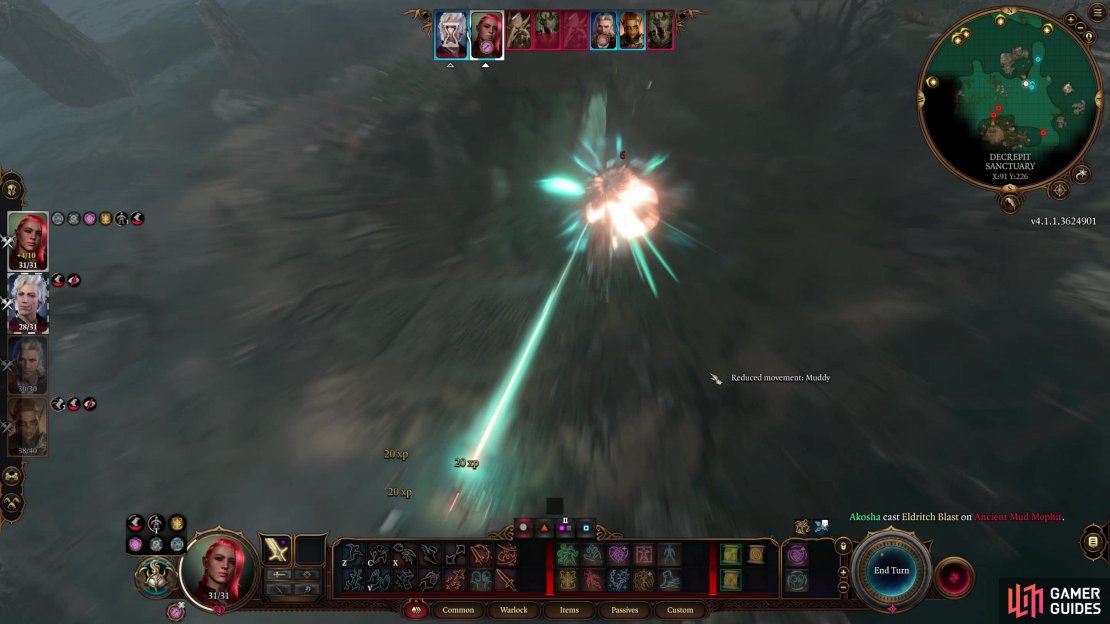
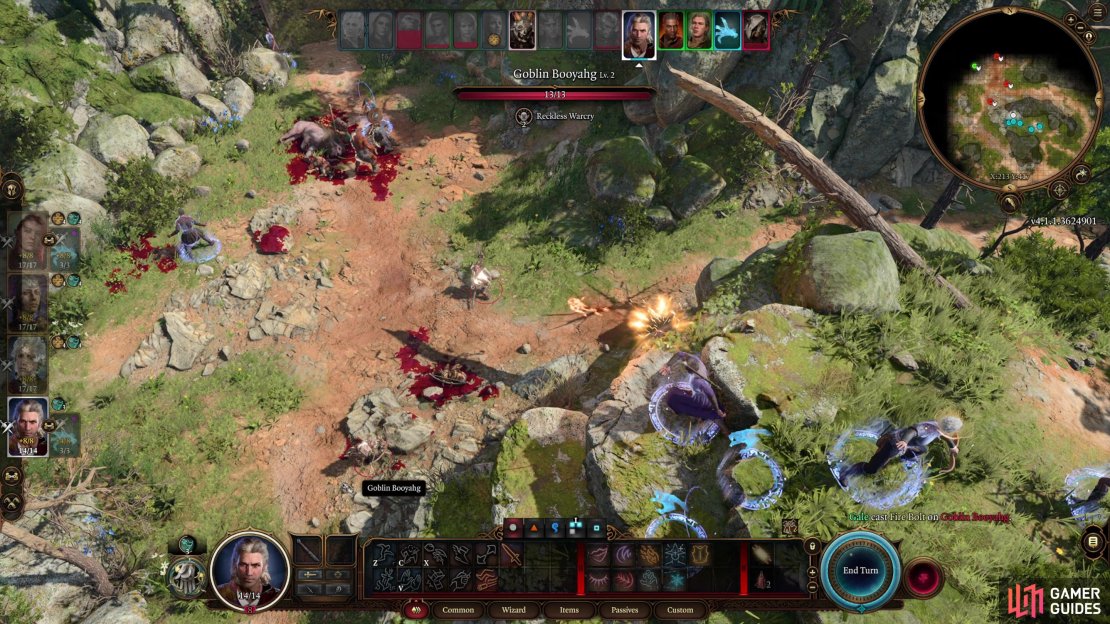
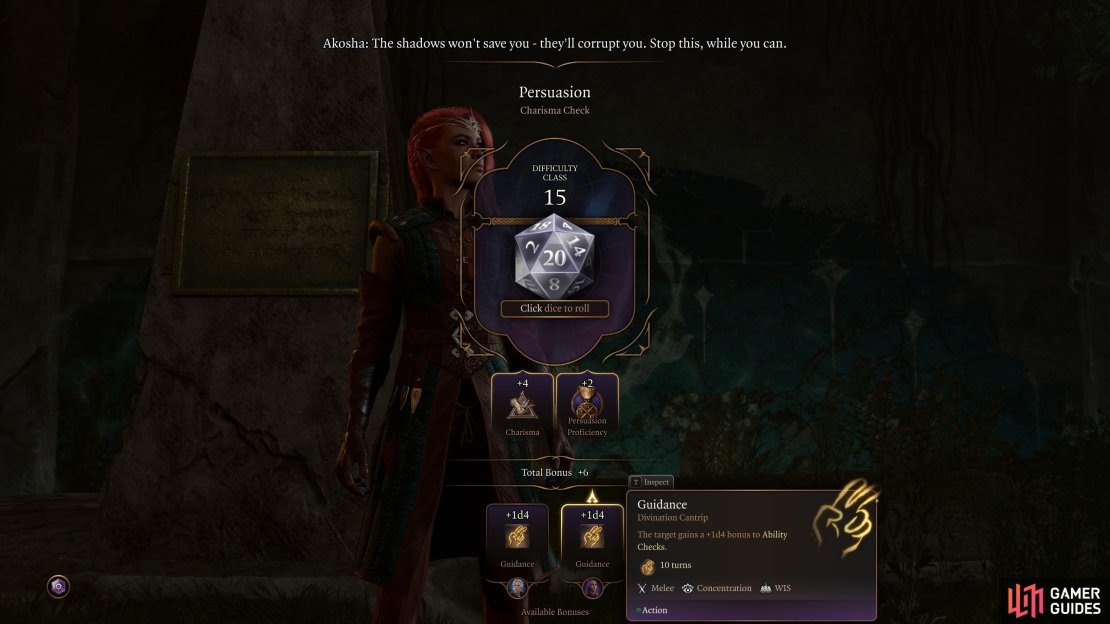
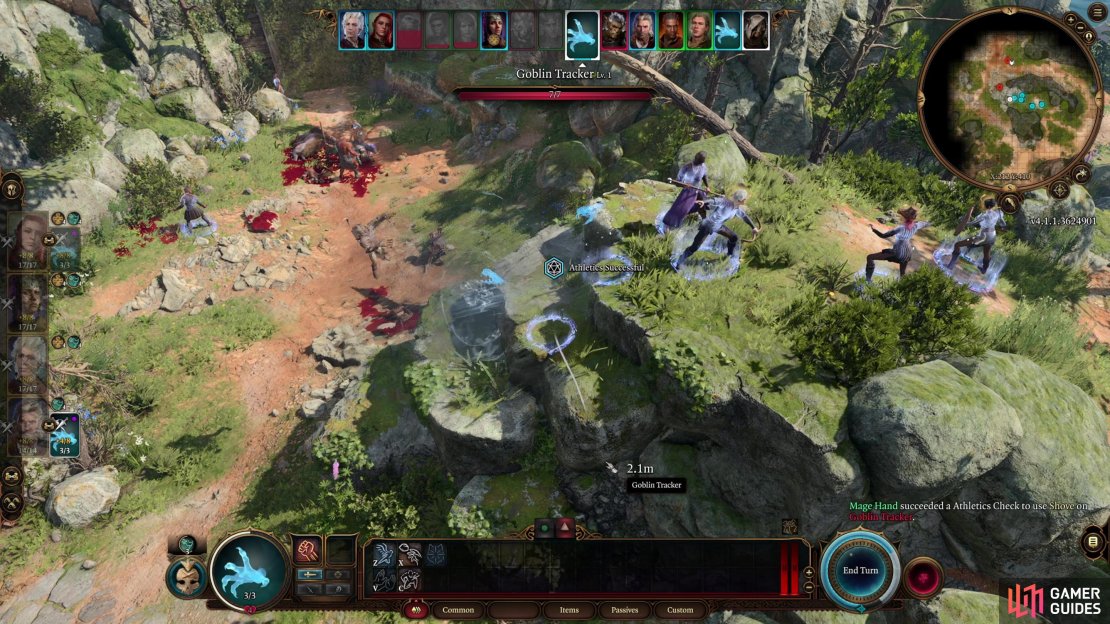

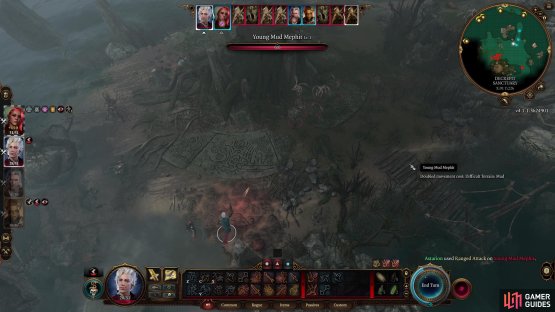



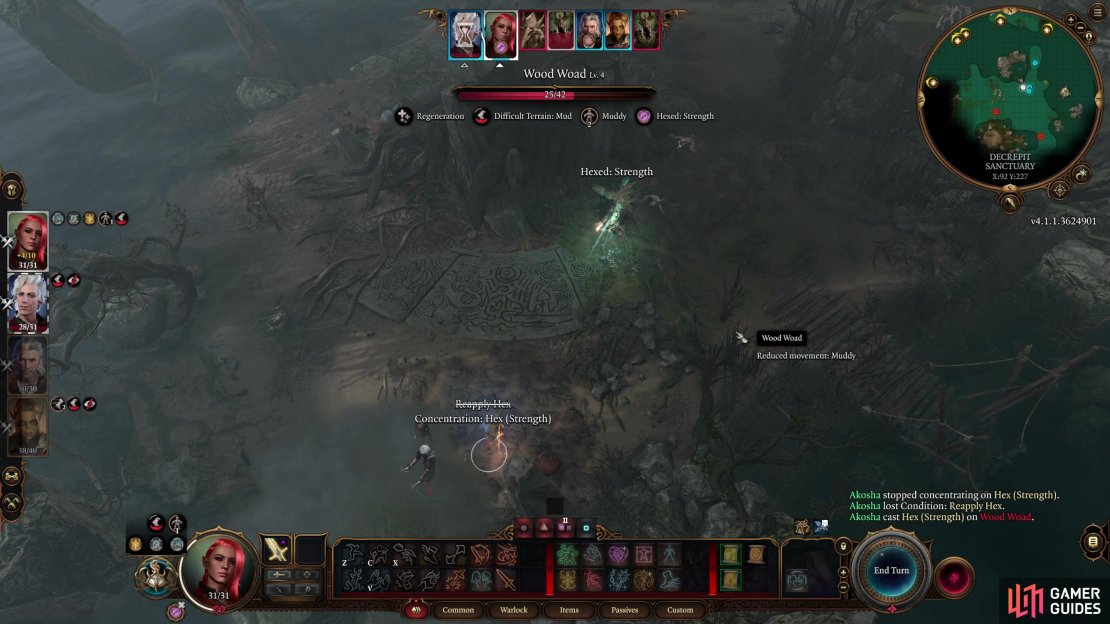
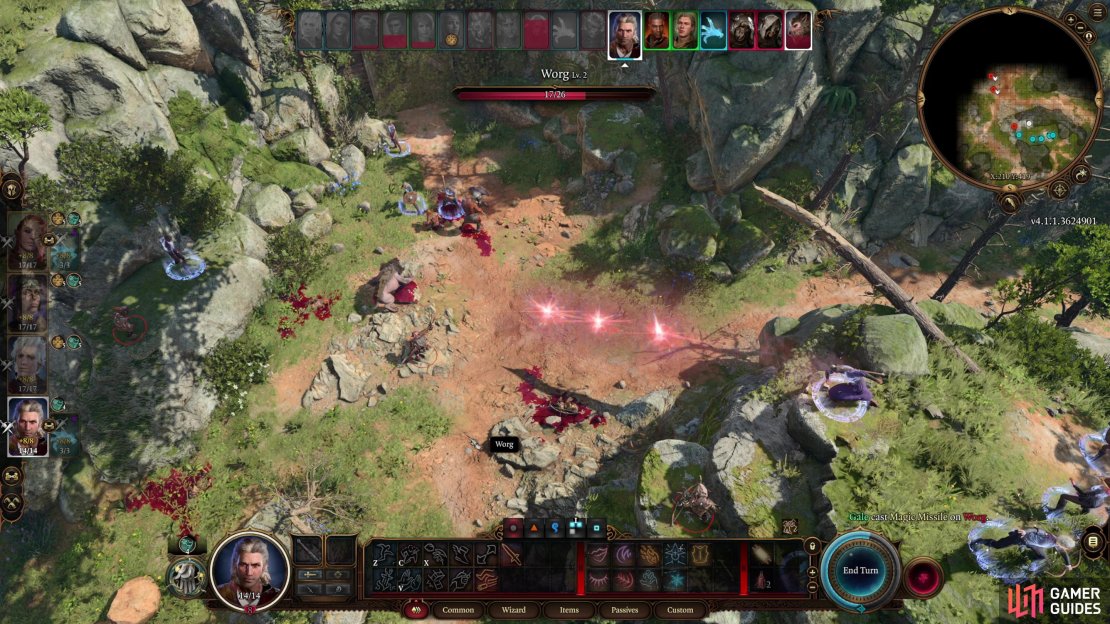

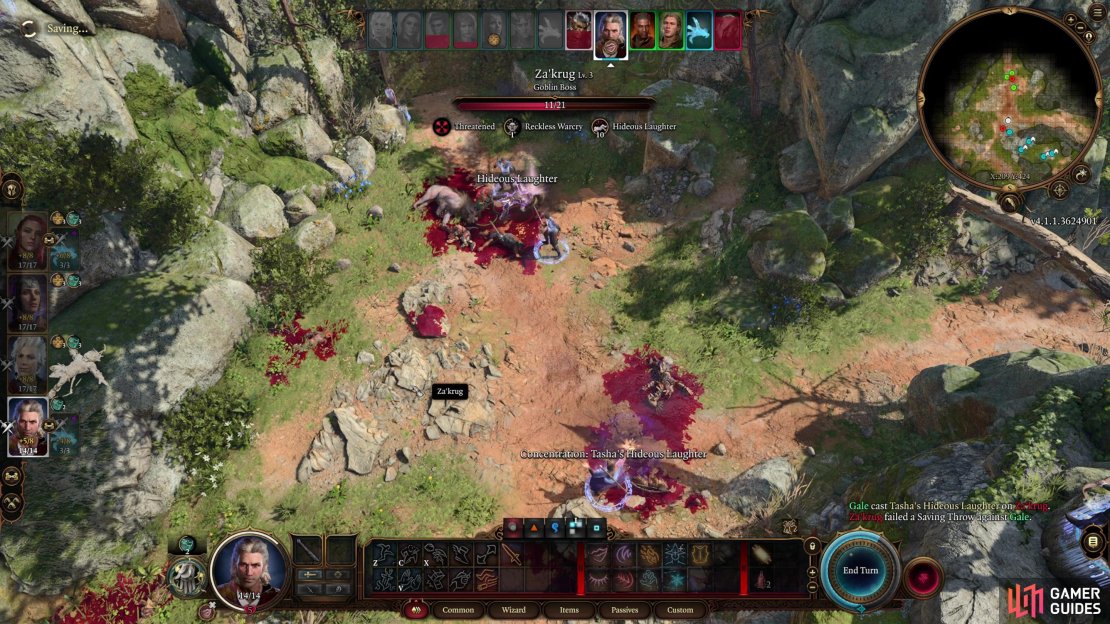
No Comments